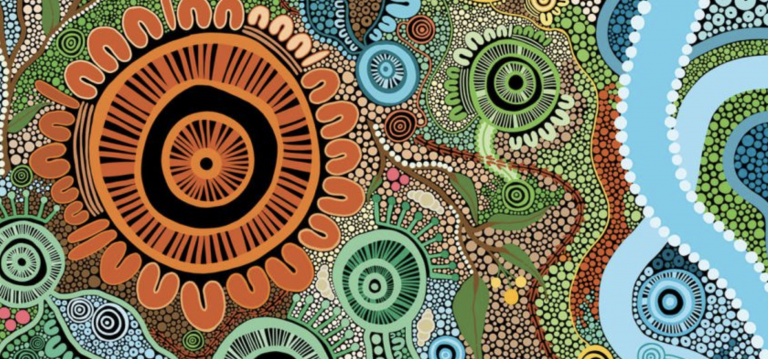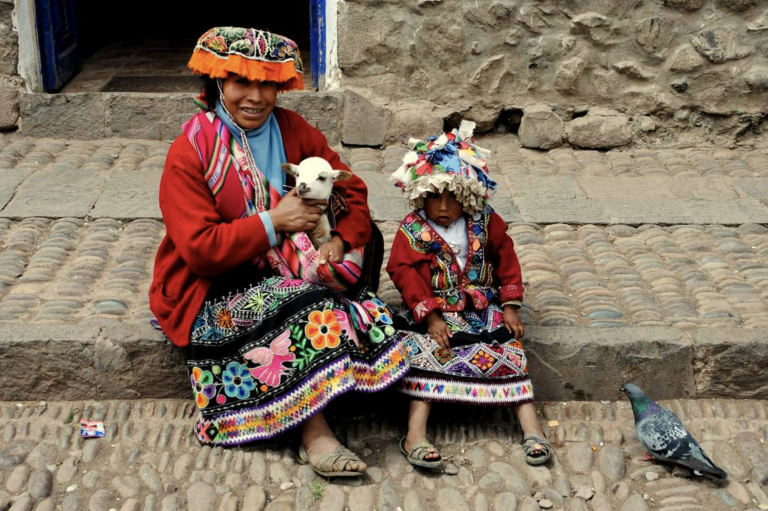A Guide on United Nations Declaration (UNDRIP) on the Rights of Indigenous Peoples
Australia is facing a reckoning. 745,000 Australians identify themselves as Indigenous. That’s three per cent of the population.
Yet Indigenous people go to jail 13 times more often than non-Indigenous people. This statistic is one fact that proves a history of discrimination. That’s why UNDRIP is so important.
What is UNDRIP, and what are its terms? How has Australia interacted with Indigenous communities, including in recent years? What are some steps Australia can take to fulfil the terms of UNDRIP?
Answer these questions and you can help create a more equal Australia. Here is your comprehensive guide.
The History of UNDRIP
Indigenous peoples have been working with the United Nations for decades. In 1982, the United States established a working group to discuss Indigenous issues. They examined studies and found that nations discriminated against Indigenous peoples.
The UN wrote the first draft of UNDRIP in 1994. Progress on the declaration took years because many countries raised several objections. The UN made another working group to revise the declaration.
In 2006, the UN established a Human Rights Council. It adopted the work on the declaration and developed further drafts.
On September 13, 2007, the UN voted on UNDRIP. More than 140 countries voted in favour of it, with only four votes against it. All four countries that voted against UNDRIP have reversed their decision.
The International Day of the World’s Indigenous Peoples is independent of UNDRIP. People can celebrate it every August 9.
The Terms of UNDRIP
UNDRIP is a long document divided into multiple sections. The preamble provides a general structure, while the Articles talk about particular rights.
The Preamble
The preamble affirms the humanity and dignity of Indigenous people. It states that “indigenous peoples are equal to all other peoples.”
The text recognizes that “indigenous peoples have suffered from historic injustices as a result of… their colonization and dispossession of their lands.” This means that access to land is a prerogative for Indigenous politics.
But the text respects the political and social structures of Indigenous peoples. In particular, the text affirms the cultures and spiritual traditions of different peoples.
The preamble goes into more specific details. It acknowledges that Indigenous knowledge helps with economic development and climate change. It asserts that governments should remove military projects from Indigenous areas.
The final paragraphs discuss the United Nations’ role in defending Indigenous people. It states that the United Nations must defend Indigenous peoples. It affirms that UNDRIP is just one step toward fighting for Indigenous rights.
Articles 1-10
The first ten articles of UNDRIP affirm basic human rights. Article 1 discusses the Charter of the United Nations.
Indigenous people have all the rights in that charter. Article 2 states that Indigenous individuals “are free and equal to all other peoples.”
Articles 3 through 5 dictate that Indigenous communities have the right to self-determination. They can maintain their political institutions and handle local affairs by themselves. But they can participate in a nation-state as well.
Article 7 gives Indigenous people the right to life. The text decries genocide and defends Indigenous communities as distinct from others.
Article 9 affirms the right of Indigenous communities to form nations. Article 10 prohibits governments from removing Indigenous communities.
Articles 11-16
Articles 11 through 16 discuss cultural matters. Article 11 allows Indigenous people to “revitalize their cultural traditions and customs.”
Countries must provide restitution for the property they took from Indigenous people. This includes human remains and burial artefacts.
Article 13 states that Indigenous people can record their histories for future generations. Article 14 allows Indigenous people to develop their own educational systems.
Articles 17-22
Articles 17 through 22 enunciate legal rights for Indigenous people. Article 17 defends the right of Indigenous individuals to enjoy labour rights. Article 19 asks that countries consult with Indigenous people through their representative institutions.
Article 20 allows Indigenous people to maintain their historical institutions. It also defends their right to redress. If a government does not let them maintain traditions, they can sue the government.
Article 22 asks that governments pay attention to children and elders. They should pass anti-discrimination laws to protect these groups.
Articles 23-26
Articles 23 through 26 discuss the development of Indigenous people, including through spirituality. Article 23 allows Indigenous peoples to determine their own development policies.
Article 24 clarifies that Indigenous people can maintain their health practices. Indigenous people should maintain a spiritual relationship with their lands. Article 26 states that communities can access their traditional lands.
Articles 27-37
Articles 27 through 37 return to legal considerations of Indigenous rights. These articles focus more on relationships between Indigenous nations and other countries.
Article 28 grants Indigenous communities restitution from the confiscation of their homelands. Article 31 discusses intellectual property. Indigenous people have the right to protect their cultural knowledge.
Article 36 discusses interstate relationships. Indigenous people can develop contacts and relationships with people across borders. This includes treaties and other formal legal agreements.
Articles 38-46
The final articles of UNDRIP clarify the obligations of countries. Article 39 states that Indigenous communities can access financial resources from countries.
Article 41 affirms the United Nations’ mission in achieving the terms of UNDRIP. Article 43 states that UNDRIP sets minimum standards for Indigenous rights. The UN can pass further declarations to grant Indigenous communities more rights.
Australia and Indigenous Peoples
Indigenous communities settled in Australia 50,000 to 120,000 years ago. Communities spread out across the land, including into the Torres Strait Islands. They developed more than 260 distinct languages with 500 dialects.
The colonization of Australia began in 1788. British colonists seized land from Indigenous people. They did not respect Indigenous land claims.
Interactions were abusive, with British colonists forcing their culture onto Indigenous communities. War broke out between the British and Indigenous. Diseases spread through Indigenous communities.
As many as one million Indigenous people died due to colonization. Exact numbers are hard to find because there are few written records.
The frontier wars ended in the 1890s. But the assimilation of Indigenous Australians continued for decades. The government required segregated schools and land and denied access to government benefits.
Government agencies and church groups kidnapped thousands of Indigenous children from their families. These children are the Stolen Generations. These children were then assimilated into white society.
The consequences of these government policies continue to this day. The life expectancy at birth from 2015-2017 was 71.6 years for Indigenous males and 75.6 years for females. Non-Indigenous boys can expect to live 80.2 years while girls can live 83.4.
You may have heard the term, “aboriginal,” in reference to Australia’s Indigenous people. You may use it or “Indigenous.”
Most Indigenous people outside of Australia reject the term. You should refer to the names of individual communities whenever possible.
What UNDRIP Means for Australia
Australia was one of four countries to vote against UNDRIP. But the government changed its opposition in 2009. Australia has tried to implement the terms of UNDRIP.
Apology
In 2008, the Parliament of Australia offered a formal apology to Indigenous Australians. The government tailored the apology to address the Stolen Generations.
Prime Minister Kevin Rudd delivered the apology. He then gave a speech about offering compensation to Indigenous communities.
Indigenous leaders greeted Rudd’s apology and speech. But they pointed out that the apology did not include details about other crimes.
National Sorry Day is every May 26. It commemorates all acts of mistreatment committed against Indigenous communities.
It is a good opportunity to study the history of Indigenous Australians. You can address the settlers’ history of abuse, especially in the present day.
Reconciliation
Reconciliation refers to attempts to strengthen relationships between Indigenous Australians and non-Indigenous people. It involves education, specifically in cultural awareness and historical acceptance. Australians understand what happened to Indigenous people and how injustices affect present-day communities.
Reconciliation involves race relations. All Australians should understand all cultures present in the country. This helps fulfil the many promises in UNDRIP’s preamble.
But it also involves institutional integrity. The nation’s structures must help Indigenous and non-Indigenous people alike. This helps fulfil Articles 17 through 26.
Reconciliation can be controversial amongst some activists. Some activists feel that it removes the present-day effects of discrimination. The Stolen Generations and other atrocities become distant.
Reparation
Reparation involves direct efforts to provide restitution for Indigenous communities. In August 2021, the government announced a reparation fund for the Stolen Generations.
The fund is part of a broader initiative dedicated to Indigenous Australians. The federal government has pledged one billion dollars to address inequalities. The government’s efforts satisfy some of the conditions in Articles 17 through 26.
The government is working on efforts to increase Indigenous access to land. This addresses Article 26.
Several states have passed acts allowing Indigenous people to claim their traditional territories. But these efforts are incomplete. Some areas tied to Indigenous spirituality remain out of Indigenous access.
Fight for Justice
UNDRIP is one of the world’s most important documents for Indigenous peoples. It establishes numerous rights that all Indigenous people share. Rights include equal treatment under the law and dissemination of cultural traditions.
Australia has subjected Indigenous people to discrimination for centuries. Ill-treatment has included the kidnapping of thousands of children.
Progress is being made to fulfil UNDRIP. The government has apologized for its crimes and is starting to make reparation.
But Australians must do more work, especially with land access. Crescent Wealth lets you use your money for social justice. Contact us today.
Share this
You May Also Like
These Related Stories

What Is NAIDOC Week? Celebrating the History, Culture and Achievements of Aboriginal and Torres Strait Islander Peoples

What Is International Day of the World’s Indigenous Peoples?


